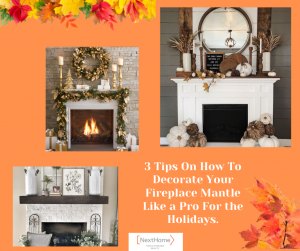
5 Factors That Reveal Where The Real Estate Market Is Really Headed.
It’s the old supply-and-demand predicament: Home sales in the U.S. continue at a torrid pace, but the availability of listings remains limited. Buoyed by historically low mortgage rates, buyers keep shopping for homes, reducing the available inventory and sparking a rise in home prices across the country.
News website The Atlantic summarized the sizzling home market this way:
“Pick a housing statistic at random, and it’s probably setting an all-time record. Home prices: record high. Inventory: record low. Percentage of homes selling above asking price: record high. Average time on market: record low.”¹
Meanwhile, homebuilders are contending with an increase in material costs and a shortage of labor. These issues come amid an ongoing shortage of housing. A study commissioned by the National Association of Realtors found the U.S. is coping with a deficit of about 2 million single-family homes and about 3.5 million other housing units.²
So what can we expect from U.S. real estate? Here are five factors that illustrate where the housing market is today and is likely heading tomorrow.
ROCK-BOTTOM MORTGAGE RATES TO GRADUALLY RISE
Low interest rates continue to fuel demand from homebuyers. Some experts believe mortgage rates will creep up later this year, but they expect rates to remain near historic lows.3 However, the Federal Reserve signaled in mid-June that it may institute two interest rate hikes as soon as 2023, which could then trigger a more substantial uptick in mortgage rates.4
In June, the Mortgage Bankers Association reported that 2020 closed with the average rate for a 30-year, fixed-rate mortgage sitting at 2.8%. But the association anticipates the average rate climbing to 3.5% at the end of 2021 and 4.2% by the end of 2022.5
“As the economy progresses and inflation remains elevated, we expect that rates will continue to gradually rise in the second half of the year,” said Sam Khater, chief economist at Freddie Mac.6
What does it mean for you?
You’ve likely heard the old saying about “striking while the iron is hot.” Well, that phrase applies to the current environment for mortgage rates. It’s impossible to predict with certainty when mortgage rates will rise or fall. So, when mortgage rates are at or near historic lows (as they are today), you should seriously consider taking advantage of those rates to borrow money for a home purchase or to refinance your existing mortgage.
HOME PRICES EXPECTED TO KEEP CLIMBING
Low mortgage rates are sparking interest among homebuyers, but some are running into affordability issues.
In June, the national median list price for a home reached an all-time high of $385,000, up 12.7% on a year-over-year basis.7 And according to the Home Buying Institute, various reports and forecasts indicate home prices will keep climbing throughout 2021 and into 2022.8
While this may be welcome news for homeowners, high prices are pushing homeownership out of reach for a growing number of first-time buyers. In a recent CoreLogic survey, 82% of respondents listed housing affordability as a key problem.9
“Younger and first-time buyers, including younger millennials, are faced with the challenge of having sufficient savings for a down payment, closing costs and cash reserves,” said Frank Martell, President and CEO of CoreLogic. “As we look to the balance of 2021, we expect price rises to continue which could very well push prospective buyers out of the market in many areas and slow home price growth over the next year.”9
What does it mean for you?
If you’re a buyer waiting on the sidelines for prices to drop, you may want to reconsider. While the pace of appreciation should taper off, home prices are expected to continue climbing. And rising mortgage rates will only make a home purchase more expensive.
SINGLE-FAMILY HOME SALES REMAIN ROBUST
While record-high prices are sidelining some buyers, the impressive pace of single-family home sales marches on.
Single-family home sales are down from their peak in October 2020 yet are still above the overall level last year. In May 2021, 5.8 million existing single-family homes were sold in the U.S. That’s a 45% increase over the 4 million homes sold in May 2020.10
However, home sales saw a 0.9% dip in May 2021 compared with the previous month, the National Association of Realtors says. That was the fourth straight month for a decline in home sales. The number of home sales has slid recently because of rising prices coupled with a shortage of available homes amid intense demand.10
Fannie Mae expects total home sales to tick up slightly in the fourth quarter and finish the year up 3.8% over last year. They also forecast a slight decline of 2.2% in sales volume in 2022.11
What does it mean for you?
The market for single-family home sales remains quite active. As a result, if you’re a homeowner, you may want to ponder whether to sell now, even if you hadn’t necessarily been thinking about doing so. With demand high and inventory low, your home could fetch an eye-popping price.
LACK OF INVENTORY STILL CONSTRAINS THE HOME MARKET
According to the National Association of Realtors, in May there were 1.23 million previously owned homes on the market, down 20.6% from the same time last year.10 This translates to a 2.5-month supply of homes, which is well below the 6 months of inventory typically seen in a balanced market.10,12
According to the Realtors group, this lack of inventory translates into tougher searches for buyers and contributes to a rise in prices.10
“Demand for bigger and more expensive accommodations amid the COVID-19 pandemic, which has left millions of Americans still working from home, is driving a housing market boom. The inventory of previously owned homes is near record lows,” according to Reuters.13
What does it mean for you?
If you’re thinking of selling your home, now may be the right time to do it. Across the country, it’s a seller’s market, meaning demand is outpacing supply. That supply-and-demand imbalance puts sellers in a great position to sell their homes at a premium price. The May 2021 Realtors Confidence Index from the National Association of Realtors found the average home that was sold attracted five offers, and the association says nearly half of homes are selling above list price.14,15
CONSTRUCTION OF SINGLE-FAMILY HOMES SEES SLIGHT UPTICK
Frustrated buyers may soon find some relief, however, from an increase in new construction. Economists forecast that 1.1 million new houses will be started in 2021, compared with a predicted 940,000 units just six months ago, with 1.2 million new starts predicted for 2022 and 2023, according to the Urban Land Institute.16
Amid the rise in home construction, builders are coping with rising costs for materials. In April, the National Association of Home Builders estimated that a surge in lumber prices over the previous year had led to $35,872 being tacked onto the cost of an average new single-family home.17
“Shortages of materials and labor have builders struggling to increase production of new homes, though the demand remains strong,” Robert Frick, corporate economist at Navy Federal Credit Union, told the Reuters news service. “Potential homebuyers should expect tight inventories and rising prices for both new and existing homes for the foreseeable future.”18
Builders (and buyers) did receive some good news in June, though: Lumber prices are coming down—although likely to remain above pre-pandemic levels for the foreseeable future.19
What does it mean for you?
Given the issues affecting the new-home market, it may make sense to widen your home search to include both new and existing homes. Your brand-new dream home may not be available, but you might be able to find an existing home that lives up to your vision. Keep in mind that we can help you find either a new or existing home and can advocate for you to ensure you get the best deal possible.
ARE YOU THINKING OF BUYING OR SELLING?
If you’re in the market for a home, you’re ready to sell your house or you’ve simply been wondering whether you should sell, you definitely could benefit from an expert to help you navigate the sizzling hot real estate market. Let’s set up a free consultation to discuss your situation. We can help you figure out your options and come up with a plan to capitalize on the value of your current property or to find your ideal next home.
Sources:
- The Atlantic –
https://www.theatlantic.com/ideas/archive/2021/05/us-housing-market-records/619029/
- Wall Street Journal – https://www.wsj.com/articles/u-s-housing-market-needs-5-5-million-more-units-says-new-report-11623835800
- Time –
https://time.com/nextadvisor/mortgages/mortgage-predictions-2021/
- Bankrate –
https://www.bankrate.com/banking/federal-reserve/fomc-meeting-recap-june-2021/
- Mortgage Bankers Association – https://www.mba.org/news-research-and-resources/research-and-economics/forecasts-and-commentary/mortgage-finance-forecast-archives
- Associated Press News –
https://apnews.com/press-release/globe-newswire/mortgages-mortgage-rates-business-0fc0360d0f4af0c988504385fa2794c3
- com –
https://www.realtor.com/research/june-2021-data/
- Home Buying Institute –
http://www.homebuyinginstitute.com/news/home-prices-will-keep-rising-through-2021/
- DS News –
https://dsnews.com/daily-dose/07-06-2021/record-high-home-prices-intensify-affordability-challenges
- National Association of Realtors –
https://www.nar.realtor/newsroom/existing-home-sales-experience-slight-skid-of-0-9-in-may
- Fannie Mae –
https://www.fanniemae.com/media/40561/display
- Real Estate Center at Texas A&M University –
https://assets.recenter.tamu.edu/documents/articles/2046-7.pdf
- Reuters –
https://www.reuters.com/world/us/us-housing-starts-rise-less-than-expected-may-building-permits-fall-2021-06-16/
- National Association of Realtors – https://www.nar.realtor/research-and-statistics/research-reports/realtors-confidence-index
- Realtor magazine –
https://magazine.realtor/daily-news/2021/05/17/report-half-of-homes-sell-above-list-price
- Urban Land Magazine – https://urbanland.uli.org/capital-markets/uli-forecast-sees-increased-improvement-in-outlook-for-u-s-economy-2/
- National Association of Home Builders – https://eyeonhousing.org/2021/04/higher-lumber-costs-add-more-than-35k-to-new-home-prices-119-to-monthly-rent/
- Reuters – https://www.reuters.com/world/us/us-housing-starts-rise-less-than-expected-may-building-permits-fall-2021-06-16/
- NPR – https://www.npr.org/2021/06/21/1008843212/lumber-prices-are-finally-dropping-after-they-soared-during-the-pandemic



 Fireplaces really add such a cozy element to a home!
Fireplaces really add such a cozy element to a home!  Looking to decorate a fireplace mantle like a pro? Here’s some inspiration & great tips!
Looking to decorate a fireplace mantle like a pro? Here’s some inspiration & great tips! !
! Multiple Textures: Having one large element in the center of the mantle and varying textures around helps to keep the mantle from looking plain & “too perfect.”
Multiple Textures: Having one large element in the center of the mantle and varying textures around helps to keep the mantle from looking plain & “too perfect.”  I love the second photo because the white picture frame & the white vases are different textures but they tie in together because they’re the same color
I love the second photo because the white picture frame & the white vases are different textures but they tie in together because they’re the same color !
! Layering Elements: Stack and layer elements in front of each other! This creates dimension and shows the depth of your mantel! Look at all the element in photo
Layering Elements: Stack and layer elements in front of each other! This creates dimension and shows the depth of your mantel! Look at all the element in photo  !
! Does it need to be symmetrical?
Does it need to be symmetrical?
